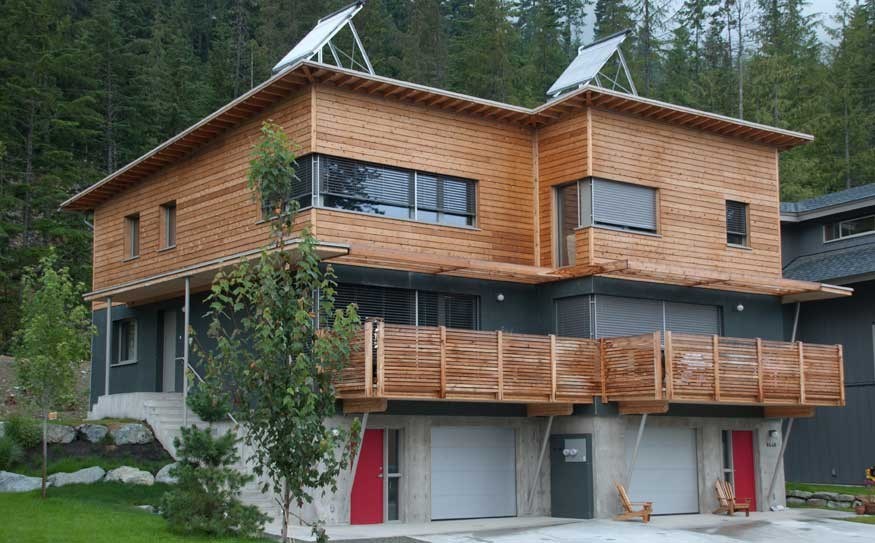Three years ago this week Whistler marked the end of the 2010 Olympic Games and the beginning of a new resort reality — a faster, safer highway, a state of the art Nordic facility, a $100 million plus sliding centre, and worldwide exposure of the Whistler name.
But there were other legacies that perhaps weren't quite as apparent in 2010, that didn't have the same cachet as the multi-million dollar investments; legacies would take a few years to foster and develop, legacies that would require a leap of faith.
This year a new passive house factory in Pemberton, that will make components for the green buildings, is set for development.
"This is the biggest investment we've made," said longtime Whistler builder Matheo Durfeld.
"We wouldn't be jumping into this if we didn't think it was a great idea."
Little did Durfeld realize when he signed on to build the complicated 2010 Austria House project, a showcase in passive house construction for the Olympics Games and the first of its kind in Canada, that in a few short years he would be spearheading his very own Olympic legacy.
"When it was all over it was like, 'now what do we do?'" recalls Durfeld of the aftermath of the Games.
Building the Austria House had convinced him of the value of the passive house construction. The question was: was there a market for it in North America?
No one was knocking on their door after the Games. Durfeld had to make a decision. If they were going to do this, they would have to drive their own future. He created another company BC Passive House, in addition to Durfeld Construction.
"The only way to prove it is to build one," he said. "So we bought a duplex lot in Rainbow."
Dawn Titus knew as soon as she walked into that house that she wanted to buy the home, even if it meant shelling out $100,000 more than her neighbours.
For Titus, however, owning the first residential Passive House in Whistler has been worth every extra penny. Not to mention the pennies saved on her hydro bills where she has seen a dramatic decrease.
"For me ultimately it really was about buying something that I knew I could stand up and say 'I'm doing my bit for the environment,'" said the Spring Creek school teacher on her lunch break this week.
"It was the right decision for me."
Perhaps not the right decision for everyone. At the open house last April, which generated a lot of interest in the community, people questioned design features such as the fact that there was no door from the garage to the home. It was seen by some as an inconvenience but crucial to the passive house design to maintain the integrity of the building envelope.
"Everyone has their own priorities and needs and for me the priority was buying into something that had this purpose and then you had to put away all of your previous conceptions of what you wanted or what would be the best for you," said Titus. "So you have to change your paradigm a little bit."
She questioned, for example, the combined washed/dryer, common in Europe but not common in North America.
To meet the passive house rating, the combo had to stay.
"I think anybody else, who again is looking at protecting the environment and decreasing their footprint, they would just accept that and they would make it work," said Titus.
The duplex proved that Durfeld could do the work, and do it in an affordable way, despite the premium.
Titus' house is part of the Whistler Housing Authority inventory. She knows when it comes time to sell she may have narrowed her potential market. But she's not too concerned.
"There was quite a lot of interest last year for the unit when it came for sale," said WHA general manager Marla Zucht. "The open house was busy and the duplex did sell from the one and only open house that was held. Going forward, the interest will depend on the price, but this one showed that someone is willing to pay more for the passive house features."
And that's what Durfeld is banking on with the new passive house plant. The construction is widespread in Europe, yet it's early days in Canada. This, despite the fact that Canadians were the ones to develop the "blower door" test, which measures the airtightness of a building — a fundamental part of passive house design.
"We believe that this is the next generation of how we should be building houses in North America," he said.
And while there will be buyers like Titus who are looking for a house that reflects their personal environmental values, Durfeld said there are other reasons too to choose passive.
"The main reason has to be: they're simply healthier, more comfortable houses to live in," he said.




